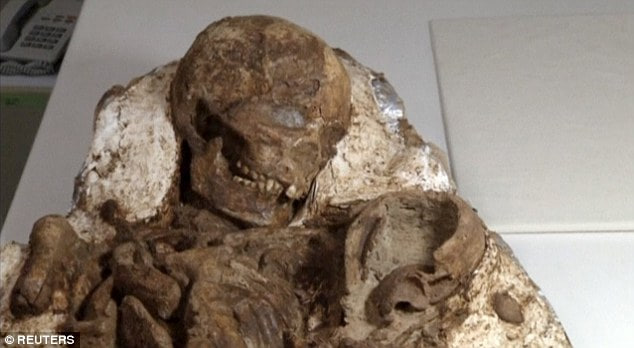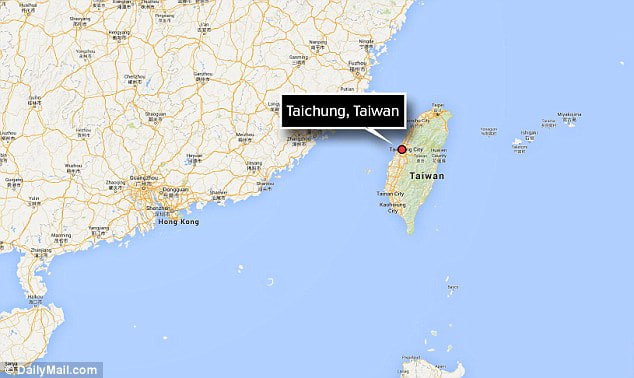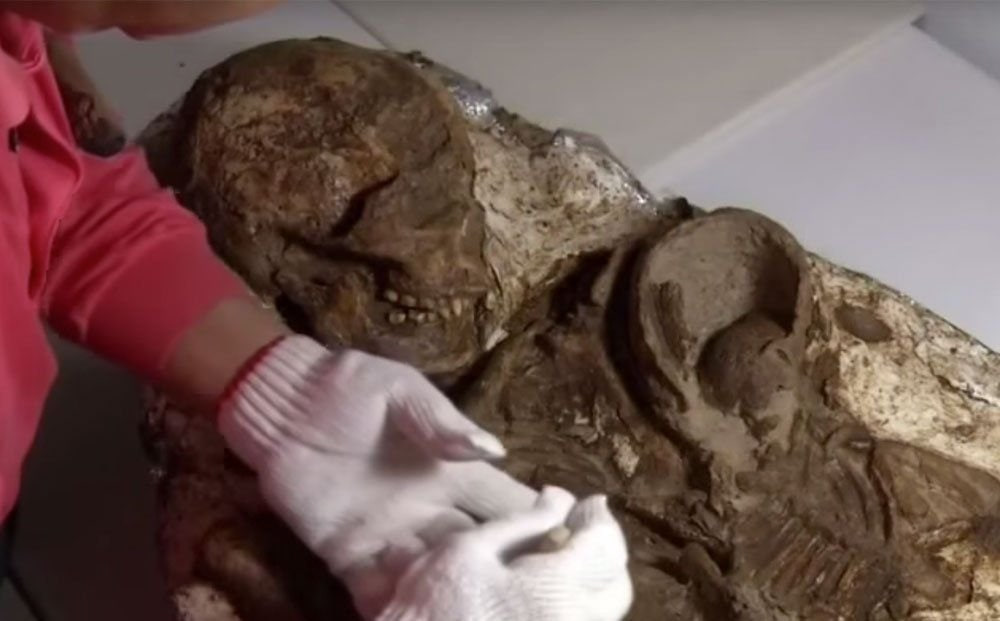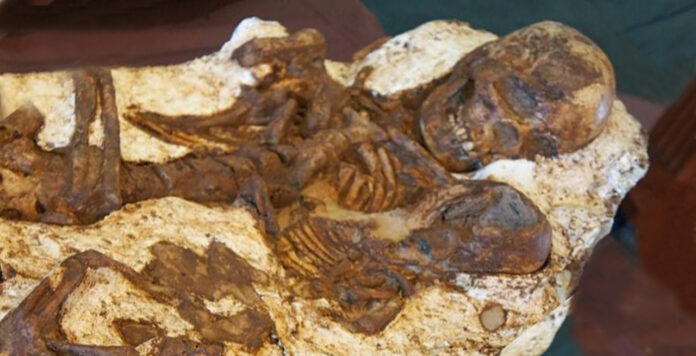4,800-year-old skeleton of a mother holding her six-month old child. She is believed to be an ancestor of the Austronesian peoples that spread across the Pacific. Taichung, Taiwan, Dapenkeng culture, 2800 BC

As Mother’s Day approached, a remarkable discovery captured the hearts and imaginations of many. Archaeologists, delving into the depths of time, unearthed the ancient remains of a young mother and her infant child, locked in a tender embrace that had endured for 4,800 years.

The discovery was made in Taiwan, where a total of 48 sets of remains were found in graves, including those of five children. Among these, the pair of mother and child stood out the most. Preserved for nearly 5,000 years, the skeletons found in the Taichung area depicted a young mother gazing lovingly down at the baby cradled in her arms. The researchers, using carbon dating techniques, traced these relics back to the Neolithic Age, a period within the Stone Age, marking them as the earliest signs of human activity found in central Taiwan.

Excavation of the site began in May 2014 and took a year to complete. When the archaeologists unearthed the remains of the mother and child, they were taken aback. Chu Whei-lee, a curator in the Anthropology Department at Taiwan’s National Museum of Natural Science, recalled the moment vividly. “When it was unearthed, all of the archaeologists and staff members were shocked. Why? Because the mother was looking down at the baby in her hands,” she said. The mother measured 160 cm in height, or 5 feet 2 inches, while the infant in her arms was just 50 cm tall – a little over a foot-and-a-half.

This breathtaking discovery, though surprising, was not the first of its kind. Similar moments, preserved for thousands of years, have been uncovered in the past. Notably, Chinese archaeologists found the interlocked skeletons of a mother and child at an early Bronze Age site in central China, known as the “Pompeii of the East.” The site, struck by a devastating earthquake and flooding from the Yellow River around 2000 BC, revealed a mother trying to protect her child during the catastrophe. Photographs of these remains show the mother looking up as she kneels on the floor, her arms wrapped around her young child, who researchers believe was a boy.

As the tale of the ancient Taiwanese mother and her child spread, it served as a poignant reminder of the enduring power of maternal love. The discovery, occurring so close to Mother’s Day, resonated deeply, offering a timeless tribute to the bonds between mother and child. This story of the eternal embrace, preserved through millennia, continues to touch the hearts of those who hear it, underscoring the universal and unbreakable connection of motherhood.




